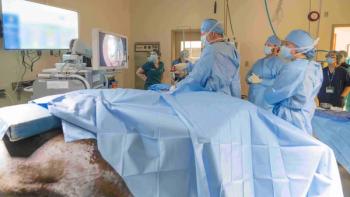
Could Dogs Become the Source of the Next Flu Pandemic?
The discovery of a new H1N1 strain of influenza in dogs has researchers questioning whether man’s best friend could become the source of a future pandemic.
As of May 2018, there have been 61
"The majority of pandemics have been associated with pigs as an intermediate host between avian viruses and human hosts. In this study, we identified influenza viruses jumping from pigs into dogs," said one of the study’s authors, Adolfo García-Sastre, PhD, director of the Global Health and Emerging Pathogens Institute and principal investigator at the Center for Research on Influenza Pathogenesis, Icahn School of Medicine at Mt. Sinai, New York City.
Putting Mammals Under the Microscope
The investigators explained that although wild aquatic birds are currently considered the primary natural reservoir host for influenza A viruses, mammals have emerged as critically underrecognized sources of influenza virus diversity. They cited that pigs, for example, were the source of the 2009 H1N1 pandemic. According to the
RELATED:
- Be a Hero for Healthy Pets, Prevent Infectious Diseases
- Canine Flu Shows No Signs of Slowing Down
The investigators also pointed to 2 instances within the past 2 decades where dogs emerged as important influenza A virus hosts:
Detecting a New Strain
Taking these recent outbreaks into account, the investigators analyzed the genomes of 16 influenza viruses from dogs in Southern China from 2013 through 2015 that presented at veterinary clinics for respiratory problems. They found that the genomes contained segments from 3 lineages that circulate in pigs: North American triple reassortant H3N2, Eurasian avian-like H1N1, and pandemic H1N1.
"In our study, what we have found is another set of viruses that come from swine that are originally avian in origin, and now they are jumping into dogs and have been reassorted with other viruses in dogs,” the authors summarized. “We now have H1N1, H3N2, and H3N8 in dogs. They are starting to interact with each other. This is very reminiscent of what happened in swine 10 years before the H1N1 pandemic."
The new virus identified in the study is H1N1, but because it comes from pigs and is of avian origin, it is different antigenically from the H1N1 strains that were seen in the pandemic and has a different origin than that of the previous H1N1 found in humans. As such, the authors recommend that future studies focus on further characterizing the virus and assessing whether humans have existing immunity. Even with the possibility that humans might be immune, the investigators concluded that the continued expansion of influenza A virus diversity in dogs combined with high human contact rates requires enhanced surveillance and ongoing evaluation of emerging pandemic threats.
"There are attempts to restrict influenza virus in pigs through vaccination and one could consider vaccination for dogs," Dr. García-Sastre said.
Newsletter
From exam room tips to practice management insights, get trusted veterinary news delivered straight to your inbox—subscribe to dvm360.




